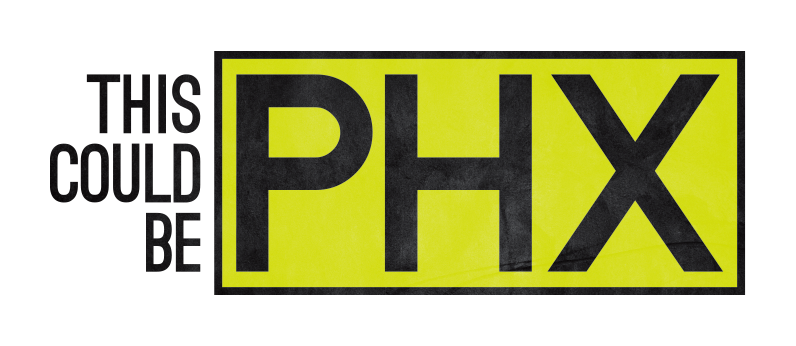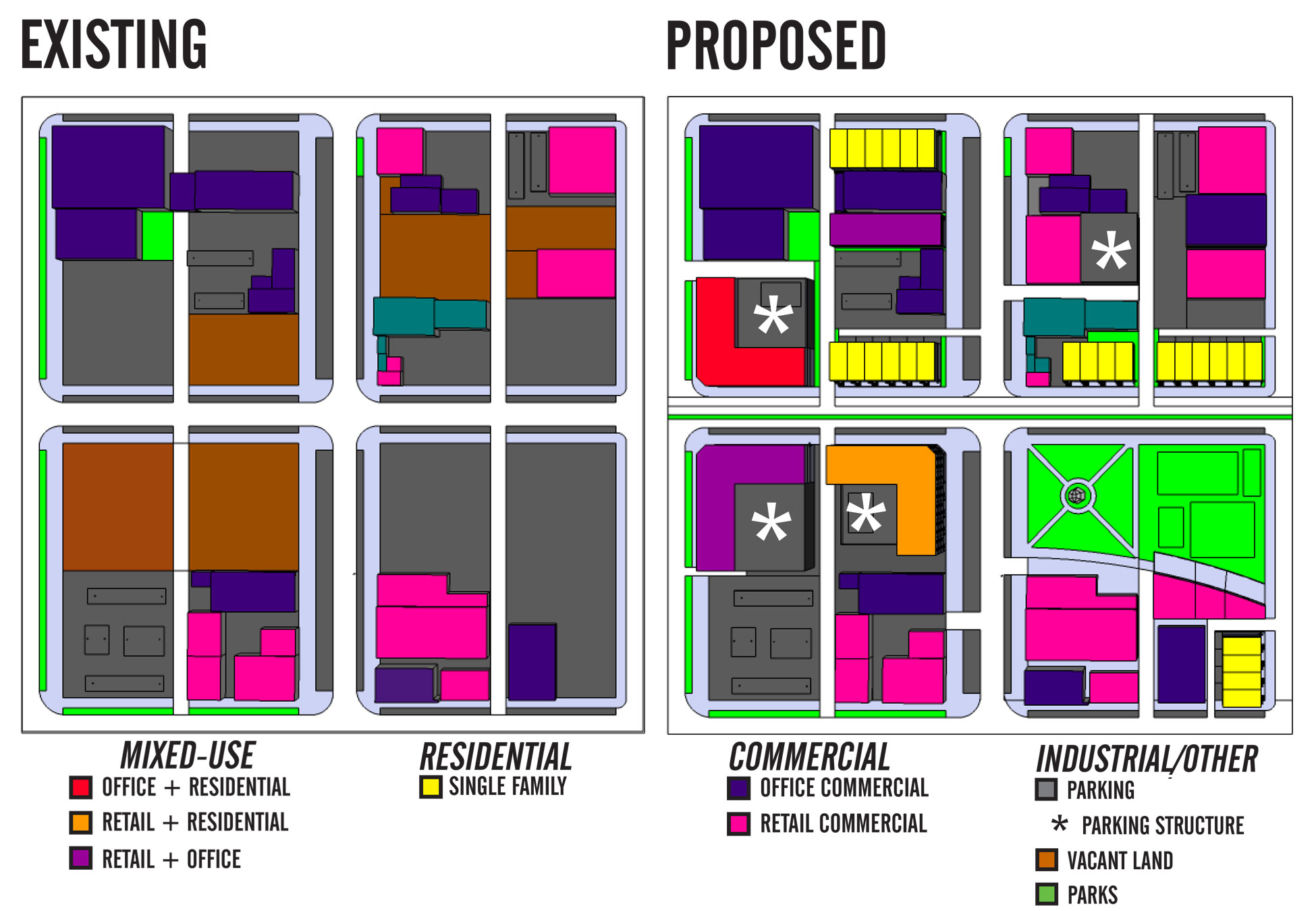
1st St. & McKinley Infill
About This Project
This project served as a way to provide sustainable urban infill without promoting an often-preferred practice of demolishing and rebuilding. Phoenix provides a unique location for urban infill. While home values continue to rise at rates among the highest in the nation, the downtown area still sits almost half vacant. Bringing development investment inwards provides a stronger urban core to build around for a sustainable future. While Phoenix is relatively young, it still holds character in the buildings that currently stand. Retrofitting within existing building stock saves energy and maintains historical context.
Cities don’t change instantly: policy and development reflect this truth. But by improving the livability and potential of city streets, block by block, planners and designers can also improve resiliency and sustainability. This project revealed how communities can achieve smart growth through smart design. This undertaking served as a reminder of how developing urban design plans only accomplishes half of the process for achieving livable communities. Properly planned blocks can provide the framework in which neighborhoods can prosper, but this success still rests upon the people within these streets. All the new urbanism tactics in the world cannot match the ability of a participatory city to thrive through its own initiative.
Project Description
With two thirds of the world’s population projected to live in cities by 2050, modern cities must plan their future infrastructure around this inward growth. This necessity is presenting an especially difficult problem to many post-WWII cities in North America.
Phoenix, often regarded as one of the least sustainable cities in the country due to its physical emphasis on planned communities and suburban sprawl, is the largest city in Arizona and the 6th largest in the United States. However, the city covers more than 519 square miles, making it one of the lowest density metropolitan areas in the country. The city now faces the challenge of maintaining the urban density necessary to keep up with a growing number of downtown residents.
Purpose
This urban design envisions how proper urban infill can provide a solution to creating sustainable urban communities in downtown Phoenix. While the downtown area contains a bustling entertainment district, a number of highly esteemed restaurants, plenty of high rise offices, and a light rail transit system, it lacks the vital elements of a successful 24-hour city. For example, the entirety of the downtown area can be classified as a food desert, due to a complete lack of an urban grocery. Additionally, many of the civic spaces only provide passive greenery and, due to a lack of residential surveillance, often prove unsafe and undesirable to downtown residents. The motivation of the designs in this project was to show how an allocation of urban building stock along new urbanism principles can bring social, economic, and ecological success to the neighborhood.
Extent
The site in question sits on a transit-oriented tract of land just north of the central business district, bounded by 2nd Street and Central Avenue and Pierce Street and Garfield Street. It’s proximity to Arizona State University’s downtown Phoenix campus provides it with access to younger, transient urban dwellers. While the site currently lacks residential, it contains several popular bars and restaurants and a few local businesses. While initial planning and construction in regards to streetscaping has already been completed by the city, both public and private investment are needed to create a viable infill solution for the future of Phoenix.
Goals
This infill design attempts to provide an example of what a livable community could be within downtown Phoenix. The site is particularly important because it provides permeability between the low-density residential and commercial areas to the North and the higher-density central business district to the South. The objective was to develop a site schematic that can serve as an example for how communities can grow around other downtown perimeters.
Key Design Concepts
Many designs within the project serve as cornerstones for such communities. Downtown Phoenix lacks family-oriented parks and green spaces that promote active use. Adding a civic park with both passive and active spaces allows for a diverse mix of users as well as providing a park within a two-minute pedestrian shed for the neighborhood. The residential units surrounding the park provide the type of natural surveillance theorized by Jane Jacobs. A mixture of uses and types of residential units provide further support for an active street life, essential in creating 24-hour cities.
Phoenix has been active in the recent decade in promoting a balance within modes of transportation. The Valley Metro Light Rail stops at two stations located within a pedestrian shed of the site, and the Valley Metro buses also service the project area. An emphasis on the street design within the site, however, was the implementation of complete streets. Streets are financial assets, and proper street design can prove to have a significant impact on surrounding land value. The proposed thoroughfares within the site provide narrower (and safer) travel lanes, cycle tracks, bicycle facilities such as the Gr:D Bike Share system, continuous street cover, ample sidewalks, appropriate lighting, and supportive building frontages. Emphasizing multimodal balance through urban design allows people the safety to choose their optimal form of transportation without relying upon the automobile.
Project Location
1st St. btwn Garfield & Pierce
Created By
Mitchell Bobman
Occupation
ASU Student
This is an envisioning of the possibilities of this location, and is by no means a project that is planned or overseen by the site or property owners. With these hypothetical projects, we hope to spark a conversation to help imagine the city's future, and our ideas do not reflect actual plans.
Date
January 23, 2014









No Comments